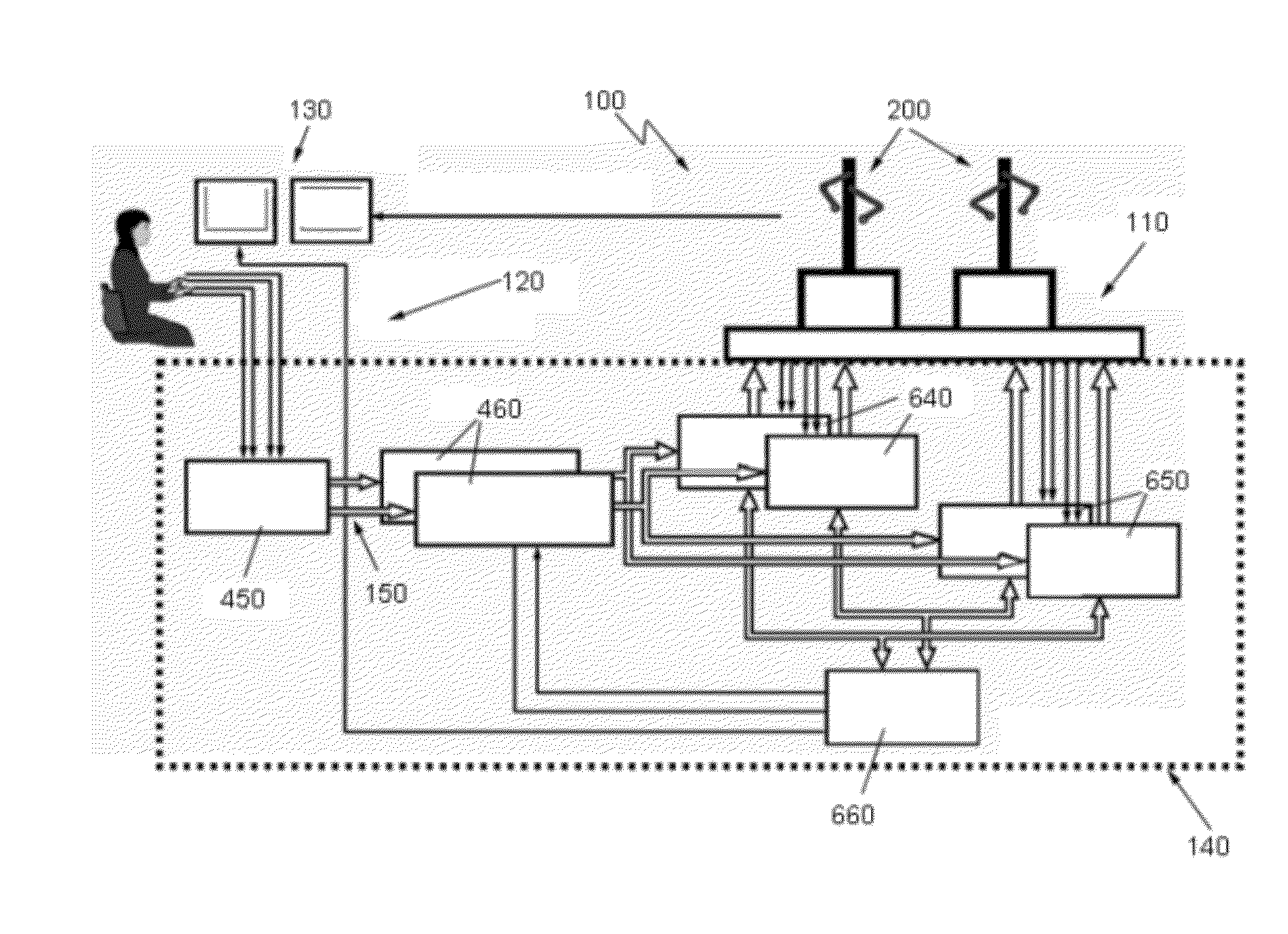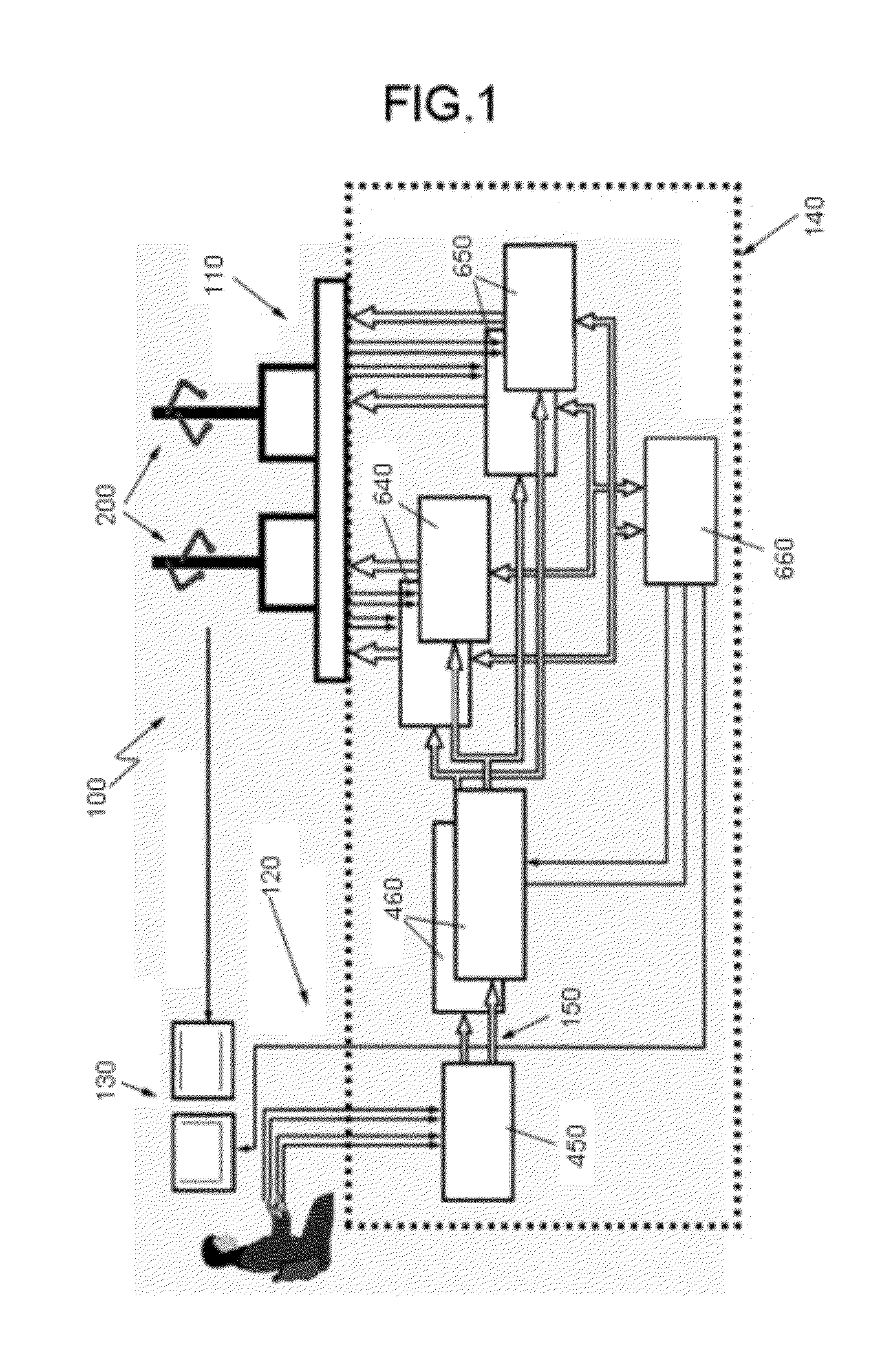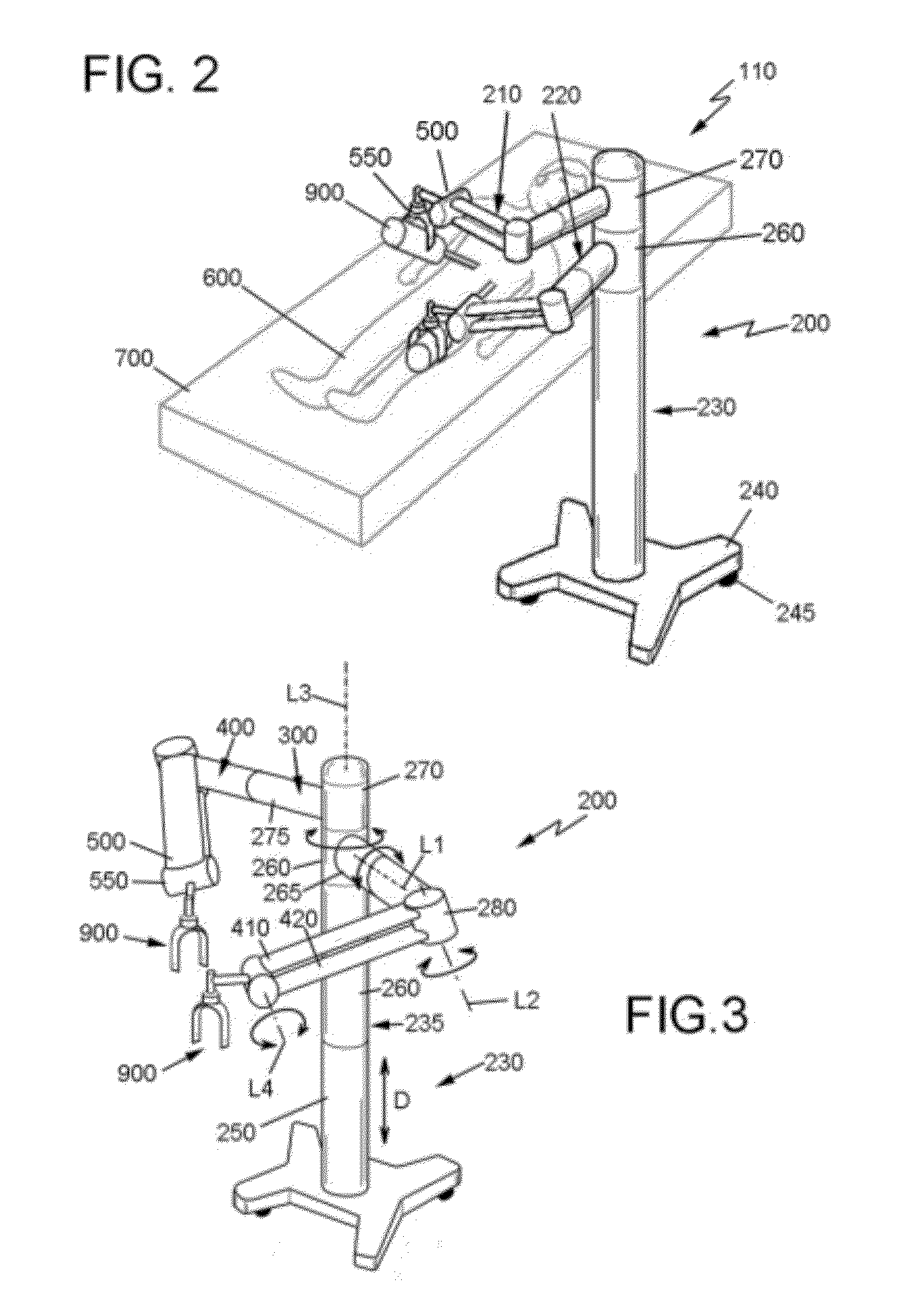Robotic System for Laparoscopic Surgery
a robotic system and laparoscopic surgery technology, applied in the field of minimally invasive laparoscopic surgery, can solve the problems of unsatisfactory robotic system, unsuitable for the purpose, and not allowing the tool to be properly positioned,
- Summary
- Abstract
- Description
- Claims
- Application Information
AI Technical Summary
Benefits of technology
Problems solved by technology
Method used
Image
Examples
Embodiment Construction
[0024]A tele-operation system 100 for performing minimally invasive laparoscopic surgery is shown in the figures. The tele-operation system 100 comprises a workstation 110 having two robotic systems 200 according to one embodiment and a tele-operation station 120 for operation and control of the robotic system 200. The tele-operation station 120 includes a three-dimensional control system 130 for displaying the workplace scene with a desired magnification factor (zoom) and a perspective that can be controlled through the movements of one of the available arms.
[0025]The operator's control commands can be converted by the tele-operation station 120 into the operation of the robotic system 200 enhancing the manual operator's capabilities and operations can be controlled for more reliability. This allows the articulated robotic arms 210, 220 of the robotic system 200 to be gesturally operated and controlled through the movements of the operator's arms. The movements that the operator is...
PUM
 Login to View More
Login to View More Abstract
Description
Claims
Application Information
 Login to View More
Login to View More - R&D
- Intellectual Property
- Life Sciences
- Materials
- Tech Scout
- Unparalleled Data Quality
- Higher Quality Content
- 60% Fewer Hallucinations
Browse by: Latest US Patents, China's latest patents, Technical Efficacy Thesaurus, Application Domain, Technology Topic, Popular Technical Reports.
© 2025 PatSnap. All rights reserved.Legal|Privacy policy|Modern Slavery Act Transparency Statement|Sitemap|About US| Contact US: help@patsnap.com



